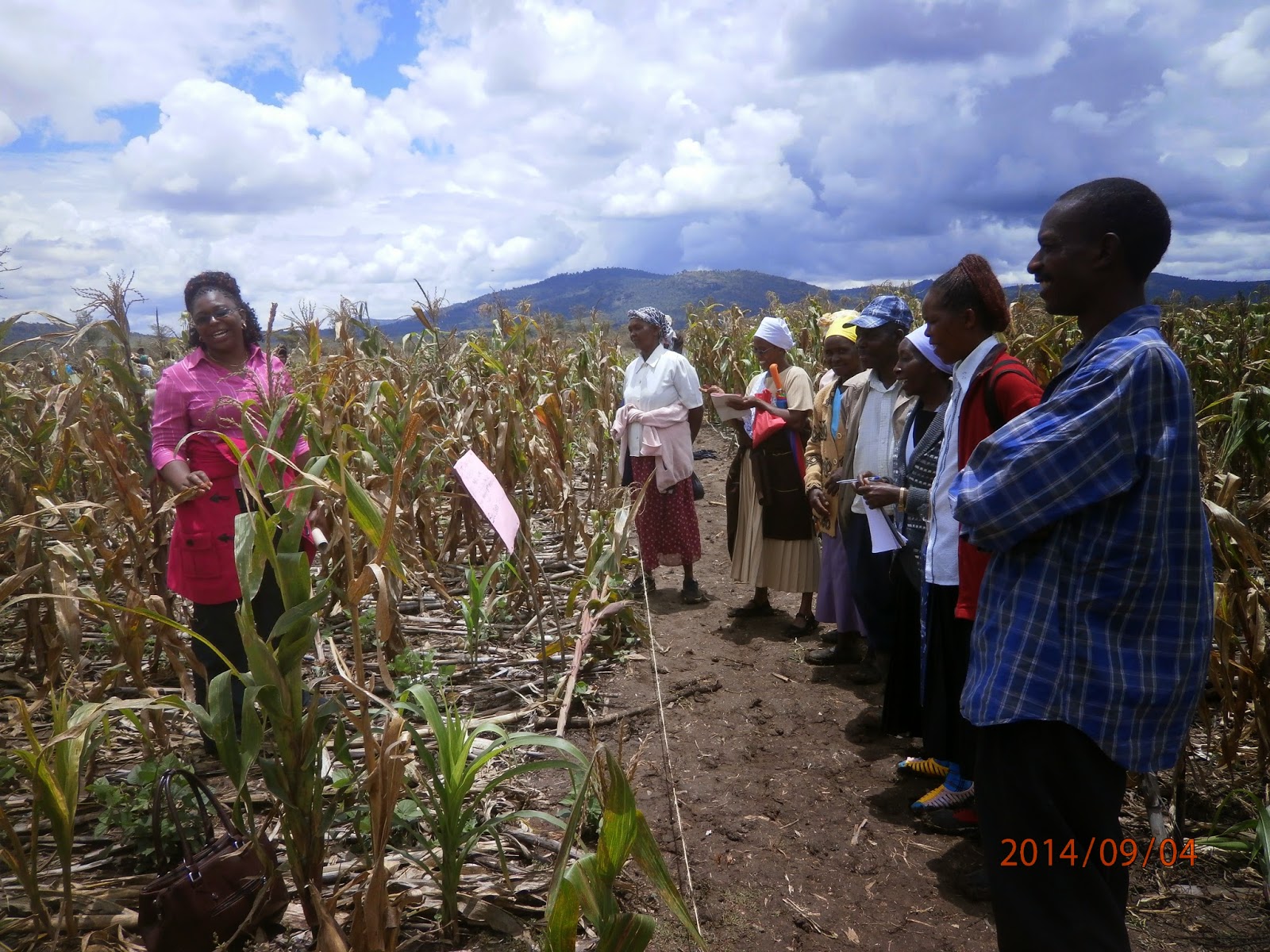 |
| Farmers receiving training at the demonstration site during the field day |
The event held on 18th
December 2014 was hosted by the Kavenge Dairy Goat farmers group at Mrs. Grace
Migwi farm in Weru-Ini Village in Laikipia East. The event was attended by a
pool of over 130 farmers drawn from the Tigithi and Ngobit wards and other
neighboring areas. The County government officials present were; The County Director
of Agriculture (CDA), Sub-County Agricultural Officer (SCAO) and the Member of
the County Assembly, Tigithi ward (MCA).
Eight
partners, including Faulu-Kenya,
Olpejeta Conservancy, Agriculture Sector development programme (ASDSP), TIST,
DUNPONT, Taifa SACCO, Sunrise Ago-dealers, Kenya Dairy Goats Association
(KENGAP) and Plan International representing
seed companies, non-governmental organizations (NGOs) and banking
institutions participated in the field
day.
The following objectives were covered;
1.
To show farmers the difference between
conservation and conventional agriculture.
2. To increase awareness of
conservation agriculture in the area.
3. To learn from the successes and good practices of the host
farmer.
4. To identify the major challenges farmers face in production
and marketing.
There were over 8 stations of learning,
including ISFM trial site, Going Beyond the demo (GBD), Permanent planting
basins under CA, cover crops, CA with trees, CA equipments, Hay production
under CA and contract farming.
The host
farmer (Grace Migwi) shared her CA experiences to the participants through practical
demonstration using Hand CA tools (Hand ripper, Jab planter and Weed scrapper) and
engaged the farmers in discussions so as to enable them learn from each other. This season (Sept 2014-Feb 2015) the
host farmer decided to adopt conservation agriculture (CA) methods at her
entire farm. "I started practicing
CA with the hope of getting better yields, since I was no longer able to feed
my family. I’m fully convinced after observing the performance of my farm that
this was the way to go”
Peter Kuria, ACT Program Officer for Kenya noted that some of the
farmers have adopted CA in the area as a result of the trainings that they have
been receiving from ACT at the demonstration sites in the area. He urged
farmers to practice CA at commercial levels so as to improve their
socio-economic status.
The area
MCA appreciated the efforts of ACT in building the capacity of farmers towards
improving agricultural productivity in the area.
Mrs. Kimaita, The County Director of Agriculture
was the guest of honor during the event. She urged farmers to adopt CA so that they
can realize better productivity and reduce the cost of production. “Food
insecurity and Cost of production is on the rise in this part of Laikipia”. Conservation agriculture not only
increase yields but also has a large bearing on the cost of production”
Mrs. Kimaita told the farmers.

























